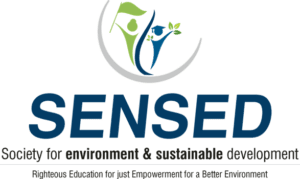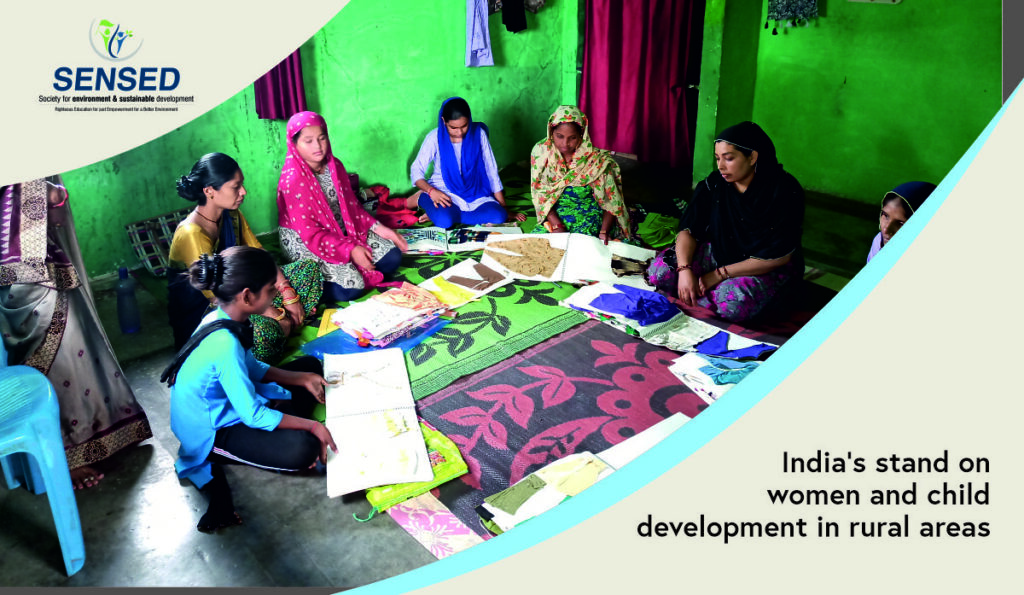It has been a long time since women and children have been subject to various harassment, underrepresentation, disparity and discrimination. Forming 22% and 48.5% of the total population i.e. more than half children and women must be prioritised more when considering and coming up with any major policy planning country’s development.
Several steps and schemes have been initiated to safeguard, empower and uplift them to facilitate socio-economic developments. Addressing the same, the Government post-independence established the Ministry of Women and Child Development to accomplish the goal. These efforts to improve the status of women and children have shown promising potential.
What is the position of women and children in rural areas?
In rural areas and households, women tend to play a key role in supporting their households. They are often associated and engaged with chores beyond household one and extending themselves in the community to earn food, and money and sustain the livelihood of the family and ensure the overall well-being. They contribute to agriculture and rural enterprises and in the process, they fuel the local and global economies.
Whereas, children who are native to rural areas often dwell in precarious conditions due to extreme poverty and similar factors. These children often at times find it hard to satisfy fundamental needs such as nutrition, access to healthcare, and education and are frequently exposed to danger. Unfortunately, accidents, forced labour, violence, molestation, and assault are a part of their everyday lives.
Due to factors like low family incomes, few livelihood alternatives, poor access to education and limited labour law enforcement, children are bound to work in mentally and physically hazardous states.
A number of rules, guidelines, schemes and policies were introduced to safeguard women’s rights and socioeconomic development
Programmes were which are envisioned by policymakers after the independence under our constitution.
Government Schemes and programs for development of women and children in Rul Areas
To address and deal with such adversities, the Union Government launched the Development of Women and Children in Rural Areas (DWCRA) as a sub-scheme of the Integrated Rural Development Program (IRDP) in 50 districts in 1982-83. Subsequently, by 1994-95, the government extended it to cover all the districts across the country.
Launched to strengthen the women’s component of poverty alleviation programmes, the DWCRA is a centrally sponsored scheme of the Department of Rural Development. Focusing on women, they emphasize economically empowering women as women are critical to the country’s development.
One of the main aims of the DWCRA programme is to raise the incomes of rural women in poor households and enable organised participation of women groups in the programmes of skill training, credit, and infrastructure support for self-employment. To aid the same on 1st April 1999, DWCRA merged with the Swarnjayanti Gram Swarozgar Yojana (SGSY).
Likewise, is the status of rural children who lack the advantages of modern amenities and facilities, such as transportation, electricity, media, hygiene, health care, and access to education and are deprived of the daily basic necessities. In such circumstances, a young child’s status is related to her mother’s as it directly impacts and affects them.
To ensure that the benefits of IRDP reach women and children directly DWCRA was introduced. Under the DWCRA programme, groups of 15-20 women belonging to poor households at the rural level are formed to obtain access to services like skill training, credit, cash and infrastructural support for self-employment. The programme aims to enhance the quality of overall well-being of both women and children from the rural areas by improving their access in the areas of:
- Health
- Education
- Child care
- Sanitation
- Nutrition
- Safe drinking water
The prime objective of DWCRA is to status of women and children by securing the areas of development in health, socioeconomic status and education by creating sufficient employment opportunities and providing financial assistance for them to become self-reliant and raise their standard of living. SENSED NGO Team teaching stitching to women of rural areas as a part of women empowerment campaign
The basic strategy of DWCRA to uplift and improve the living conditions of women and their development in rural areas is by forming a group of 10-15 poor women who help each other and use their collective strength to break social bonds that deny them income-generating and self-fulfilling opportunities. These women are collectively made aware of their potential, strength, group objectives and benefits before undertaking group activities under the programme and following which the members themselves determine the income generation activity that they would undertake based on their skills.
After which, one woman from the group acts as the group organizer and helps to choose the procurement of raw materials, activities and marketing of products for the benefit of the group members.
Community-Based Convergent Services under DWCRA –
DWCRA introduced Community-Based Convergent Services (CBCS) as its component in 1991 in a few districts as a pilot programme. The main objective of CBCS was to create awareness amongst the village communities, enabling them to demand social services given by the state and share responsibilities in the implementation and management of all these services, thus overall leading to sustainable development.
Some of the most common means of sensitizing the community to the basic needs are traditional methods like role play, visuals, puppetry, folk art, drama, dance, etc. The aim of this programme is to strengthen the existing organization of rural poor women and encourage the level of the economic and social status of women to help them reach and develop their full potential.
During 1995-96, DWCRA incorporated the Child Care Activities (CCA) programme with the following objectives –
- Offering creche services for children of working women
- Establishing literacy centers for women, especially for the dropout girl child and the other illiterate members of the groups
- To fill up crucial gaps in the areas of nutrition, immunization, etc while focusing more on girl children to reduce the gender disparity
- To provide relief to the physically disabled child
- Offering pay and immediate relief for legal assistance in the case of redressal of physical abuse of a girl child
Areas covered under DWCRA to help the development of women and children of rural areas –
Initially, DWCRA had no specific protection for vulnerable groups. However, in 1997-98, it became a necessity for 50% women of in the groups to belong to the ST/SC community. Physically disabled persons and girls and women rehabilitated from prostitution were prioritized.
Child care activities under DWCRA –
Besides DWCRA, several Non-Governmental organizations (NGOs) are stepping up to address these issues and extend a helping hand to promote help and assistance for the development of women and children in rural areas. Abiding by their core values, uncountable NGOs are devoted to the work for the upliftment of society and every single part starting from healthcare, protecting child’s rights, promoting children’s rights in India, encouraging girl child education, working on poverty eradication, fighting social injustice, protecting women and children against gender disparity, etc.
SENSED as an NGO following in the same footsteps with the hope to bring about a brilliant change in the status of both women’s and children’s development in rural areas, SENSED has taken small but powerful steps in this direction.
Deeply believing in the slogan that “Investment in women is a proven path to diminish poverty” and “Education is the essence of the soul” we directed our efforts towards securing women and children, their fundamental rights, illuminating them about different aspects to improve their status, raise their way of living and how literacy can bring a difference in leading life.
SENSED initiated education, training and skill development for women and started running schools for those underprivileged who lacked the chance to do so.
Our objective for women and child development in rural areas is to empower women and develop their status in society while imparting proper education and guideline to children to ensure that our “tomorrow” shines bright.
We initiated and still continue to observe several women empowering projects like “Nasha Mukti”, “ShikshanPrashikshan”, “Save Girl”, “Mahila Prashikshan Vocational Training for women empowerment”, “Hasthashlip Prashikshan”, “Mata AvamSishu Raksha”, and “Menstrual Hygiene Management (MHM)” – to educate women about their rights and how they should treat themselves helping and contributing the society in the long run. With all these programmes we trained, taught, enlightened, developed and empowered women.
We established a CBSE School named “The Global School of Excellence” with the objective of providing high-quality education and also commenced “Mohalla schools” for children of deprived sections to provide them education at their doorsteps. Furthermore, we kept our contribution to the deed consistent with our programmes We initiated and still continue to observe several child empowering projects like “Book Distribution Event”, “Sports Programme”, “Pratibha Samman Programme”, “Self & General Awareness Event”, “Celebrations and funfair visits with Divyang Children”, “Parent Orientation Programme”, “Educational Tour”, and “E-Tablet Distribution” – to educate student and increase the awareness about the need and significance of embracing and encouraging child education in the rural areas while affecting the society as a whole.
And with all these efforts over these years, we have successfully addressed and resolved the issues of gender disparity, malnutrition, forced child labour, domestic violence, socioeconomic status, poverty eradication, and access to health benefits while creating a safe environment for them to prosper.
Also Read: Women Empowerment – strengthening the pillars of our future

